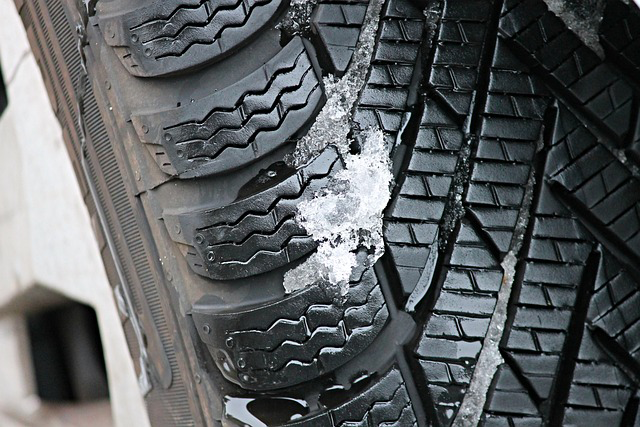
Winter Car Preparation
As winter approaches, prioritizing seasonal car care becomes imperative to ensure optimal vehicle performance and safety during challenging weather conditions.
Adequate winter car preparation is crucial for driving during the winter season. Due to the unique set of challenges and risks posed by colder temperatures, snow, and ice.
To address these concerns and mitigate potential risks, motorists need to engage in a comprehensive winter car care routine.
This involves a step-by-step process that includes checking and maintaining the battery, inspecting and rotating tires, ensuring proper levels of antifreeze and other essential fluids, examining the brakes, and verifying the functionality of heating systems.
By proactively addressing these aspects, individuals can enhance their vehicle’s resilience to winter conditions, promoting both driver and passenger safety on the roads.

Table of Contents
Checking the Battery: Winter Car Preparation
Visual Inspection:
Begin by visually inspecting the battery for any signs of corrosion or damage. Look for leaks, cracks, or loose connections. If you notice any issues, it may be necessary to replace the battery.
Check Voltage
Utilize a voltmeter to measure the battery’s voltage. A fully charged battery typically reads around 12.6 volts. If the voltage is significantly lower, it may indicate a weakened battery that requires attention.
Load Test
Perform a load test using a battery load tester. This assesses the battery’s ability to deliver power under normal operating conditions. If the battery fails the load test, consider replacing it before winter sets in.
Antifreeze Levels and Coolant System Inspection
Safe Assessment
Ensure the engine is cool before attempting any checks. Carefully open the radiator cap or access the coolant reservoir, placing a cloth over it to prevent splashes.
Antifreeze Levels Check
Examine the coolant reservoir or use a radiator cap to verify that the antifreeze levels are within the recommended range. Adequate levels are vital for effective temperature regulation.
Coolant Inspection
Assess the condition of the coolant by observing its color and clarity. A clean, clear appearance indicates a healthy coolant system, while a murky or discolored fluid may signal contamination or the need for a flush.
Leak Inspection
Thoroughly inspect hoses, the radiator, and the water pump for any signs of leaks. Addressing leaks promptly is crucial to maintaining the integrity of the coolant system.
Proper Topping Up
If antifreeze levels are low, add a 50/50 mixture of antifreeze and distilled water to reach the recommended concentration. Avoid using tap water, as it may contain minerals that can compromise the cooling system.
Winter Tire Checklist

Checking Tire Tread Depth
Measure the tread depth regularly using a tread depth gauge or the commonly employed “penny test.” Insert a penny into the tread with Lincoln’s head facing downward; if the top of Lincoln’s head is visible, it indicates insufficient tread depth. Adequate tread depth is essential for proper water and snow dispersion.
Inspecting Tire Condition
Regularly examine tires for signs of wear, cuts, bulges, or punctures. Ensure that the sidewalls are free from damage. Damaged tires can compromise overall traction and pose safety risks, especially in winter conditions.
Proper Inflation
Maintain recommended tire pressure levels, as under-inflated tires can compromise traction and increase the risk of accidents. Check tire pressure regularly, particularly in colder weather when tire pressure tends to drop.
Winter Tire Consideration
Consider investing in winter tires designed explicitly for cold weather conditions. Winter tires feature a specialized rubber compound that remains flexible in low temperatures, allowing for better grip on snow and ice. The distinct tread patterns are designed to bite into snow, providing enhanced traction.
Benefits of Winter Tires
Improved Traction
The unique design of winter tires provides superior traction on snow and ice, reducing the likelihood of slipping and sliding.
Shorter Stopping Distances
Winter tires contribute to shorter braking distances in cold and slippery conditions, enhancing overall safety.
Enhanced Maneuverability
The specialized construction of winter tires facilitates better control and responsiveness, crucial for navigating winter road challenges.
Cold Weather Performance
Unlike all-season tires, winter tires maintain their effectiveness in colder temperatures, ensuring consistent performance throughout the winter season.
Checking your Brakes for Winter
Braking in icy or snowy conditions poses unique challenges, requiring a well-maintained braking system to ensure driver safety and control. Here’s a comprehensive checklist for inspecting the brake system and addressing the specific challenges associated with winter driving:
Brake Pad Inspection
- Examine the thickness of the brake pads. If they are worn down to 3mm or less, consider replacing them. Worn brake pads compromise stopping power and responsiveness.
Rotor Examination
Inspect the brake rotors for signs of scoring or uneven wear. Smooth and even rotors are essential for consistent braking performance. Replace any damaged or excessively worn rotors.
Brake Fluid Check
- Check the brake fluid level and ensure it is within the recommended range. Additionally, inspect the fluid for any signs of contamination or dark coloration, as this may indicate the need for a brake fluid flush.
Brake Lines Inspection
- Examine brake lines for any signs of leaks, cracks, or corrosion. Damaged brake lines can lead to fluid loss and compromise the effectiveness of the braking system.
Caliper Assessment
- Ensure that brake calipers are functioning properly and that they apply even pressure to the brake pads. Lubricate caliper slides if necessary to prevent uneven wear.
Wiper Blades and Washer Fluid
Visibility is paramount during winter weather, as snow, ice, and sleet can significantly impair a driver’s ability to see the road. Maintaining effective wiper blades and using the right washer fluid is essential for ensuring clear visibility. Follow these guidelines for checking and replacing wiper blades, as well as selecting a winter-grade washer fluid:
Checking Wiper Blades
Regularly inspect the condition of wiper blades for any signs of wear, such as streaking, skipping, or reduced effectiveness. Lift the blades and run a finger along the rubber edge to detect any irregularities. Worn wiper blades should be replaced promptly to ensure optimal performance.
Replacing Wiper Blades
Follow these steps to replace wiper blades:
- Lift the wiper arm away from the windshield.
- Press the release tab or button to detach the old wiper blade.
- Attach the new wiper blade according to the manufacturer’s instructions.
- Gently lower the wiper arm back onto the windshield.
Winter-Grade Washer Fluid
Choose a winter-grade washer fluid designed to withstand freezing temperatures. Winter washer fluids contain antifreeze agents that prevent the fluid from freezing on the windshield. This is crucial for maintaining clear visibility in cold weather.
Refilling Washer Fluid
Regularly check the washer fluid reservoir and top it off as needed. In winter, ensure that the fluid you use is suitable for freezing temperatures. Many winter-grade washer fluids are available commercially, offering improved functionality in sub-zero conditions.
Emergency Preparedness Kit
In the face of unpredictable winter weather, drivers must assemble a comprehensive emergency preparedness kit for their vehicles. The kit should include essentials to ensure safety and comfort in unexpected situations. Consider items such as blankets, flashlights with extra batteries, non-perishable snacks, and a well-stocked first aid kit. Being prepared for the unexpected challenges of winter ensures that motorists can address emergencies efficiently and maintain their well-being during adverse conditions.
Wrapping up on Winter Car Preparation...
As we navigate the winter months, prioritizing proactive winter car care is paramount for safe driving. Key elements include checking and maintaining the battery, ensuring proper tire traction, inspecting the braking system, monitoring antifreeze levels, and keeping the windshield clear with functional wiper blades and winter-grade washer fluid. In summary, a well-maintained vehicle is better equipped to handle the challenges posed by winter weather.
To reinforce the importance of winter car care, I encourage readers to take the extra step of scheduling a professional winter maintenance check at their local auto repair shop. Professional inspections can identify potential issues and ensure that vehicles are winter-ready, promoting safety and peace of mind. By adopting a proactive approach to winter car care, drivers can confidently navigate through the season, knowing that their vehicles are prepared for whatever challenges the winter roads may present. Stay safe, stay prepared, and enjoy the winter season responsibly.
